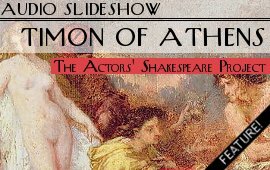 I suppose I’m responding here more to activity in the local blogosphere (see and ), than I am to the ongoing news of Shepard Fairey versus the AP and his recent statement that he knowingly falsified evidence, because I follow those blogs more closely than Shepard Fairey news and my problem with his work isn’t unoriginal images, but rather unoriginal ideas.
I suppose I’m responding here more to activity in the local blogosphere (see and ), than I am to the ongoing news of Shepard Fairey versus the AP and his recent statement that he knowingly falsified evidence, because I follow those blogs more closely than Shepard Fairey news and my problem with his work isn’t unoriginal images, but rather unoriginal ideas.
 During the Fairey exhibition, I felt Fairey was, albeit between the lines, inappropriately billed as some kind of new Warhol. Can you imagine Warhol reacting like Fairey did to this lawsuit? like a teenager getting caught with a bag of pot or someone who’s being sued by the RIAA for downloading the latest Godsmack album. Warhol was sued in 1966 by Patricia Caulfield, who took the picture he used for his Flowers (right). He ended up settling out of court, giving her a couple paintings and royalties on his profits (or cash and paintings or just money, depending on where you read about it). I can imagine Warhol replying to some of the questions Fairey has been asked with “God, but I love the AP, they can have the picture back” or “But, it’s just so much easier to get pictures from Google.” I actually don’t think Fairey was in the wrong by using the image (at least I hope not, because I steal pictures all the time for this blog), but he certainly is now for falsifying evidence, countersuing the AP, and .
During the Fairey exhibition, I felt Fairey was, albeit between the lines, inappropriately billed as some kind of new Warhol. Can you imagine Warhol reacting like Fairey did to this lawsuit? like a teenager getting caught with a bag of pot or someone who’s being sued by the RIAA for downloading the latest Godsmack album. Warhol was sued in 1966 by Patricia Caulfield, who took the picture he used for his Flowers (right). He ended up settling out of court, giving her a couple paintings and royalties on his profits (or cash and paintings or just money, depending on where you read about it). I can imagine Warhol replying to some of the questions Fairey has been asked with “God, but I love the AP, they can have the picture back” or “But, it’s just so much easier to get pictures from Google.” I actually don’t think Fairey was in the wrong by using the image (at least I hope not, because I steal pictures all the time for this blog), but he certainly is now for falsifying evidence, countersuing the AP, and .
While certainly a comparison can be drawn in terms of their modes of appropriation, Fairey falls far short of Warhol in terms of the depth of that appropriation, though he is considerably more garrulous. I think a simple juxtaposition illustrates how different they are; mainly, how great Warhol was and how silly Fairey can be. Below are Fairey’s apology and the first few seconds of the excellent .
STATEMENT ON ASSOCIATED PRESS FAIR USE CASE
In an effort to keep everyone up to date on my legal battle to uphold the principle of fair use in copyright laws, I wanted to notify you of a recent development in my case against The Associated Press (AP).
On October 9, 2009, my lawyers sent a letter to the AP and to the photographer Mannie Garcia, through their lawyers, notifying them that I intend to amend my court pleadings. Throughout the case, there has been a question as to which Mannie Garcia photo I used as a reference to design the HOPE image. The AP claimed it was one photo, and I claimed it was another.
The new filings state for the record that the AP is correct about which photo I used as a reference and that I was mistaken. While I initially believed that the photo I referenced was a different one, I discovered early on in the case that I was wrong.
In an attempt to conceal my mistake I submitted false images and deleted other images. I sincerely apologize for my lapse in judgment and I take full responsibility for my actions which were mine alone. I am taking every step to correct the information and I regret I did not come forward sooner.
I am very sorry to have hurt and disappointed colleagues, friends, and family who have supported me in this difficult case and trying time in my life.
I am also sorry because my actions may distract from what should be the real focus of my case – the right to fair use so that all artists can create freely. Regardless of which of the two images was used, the fair use issue should be the same.
- Shepard
[flashvideo file=wp-content/uploads/2009/10/warhol.flv /]





Thanks for posting some interesting information about Warhol, which neat undercuts the dim claim, oft heard locally, that Fairey is somehow like Warhol in his appropriation of images. This line of argument, needless to say, reveals a complete misunderstanding of Warhol, whose great subject was the problem of banality in modern imagery. Even “Flowers,” above, is clearly about the parallel between its mechanically-produced tones and its clichéd subject matter – an original, rather than appropriated, insight. Fairey has no such sophistication or conceptual depth. Indeed, he offers nothing but his own self-promotion, which he effects with borrowed means. In a “meta” way, of course, this does provide an amusing comment on his admirers.